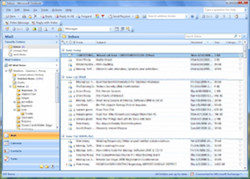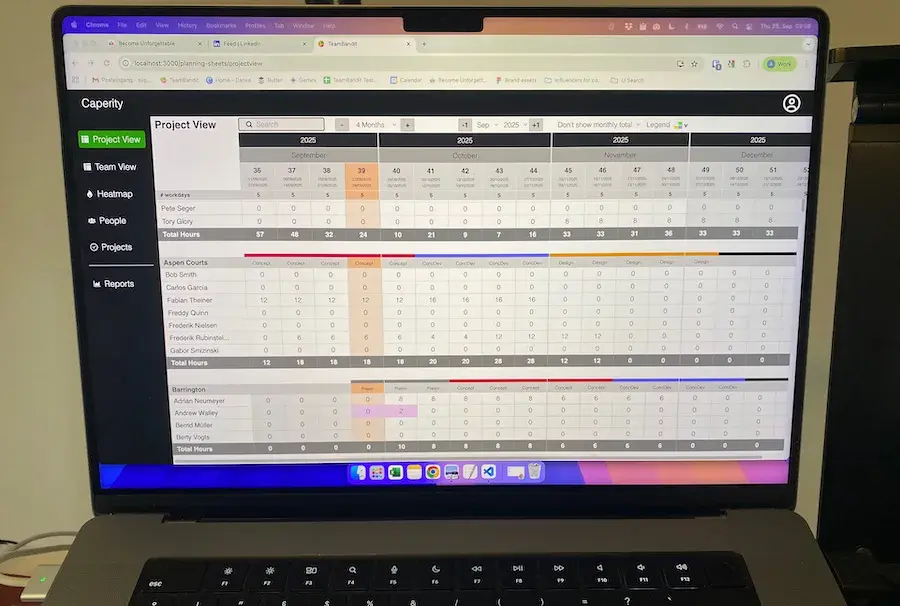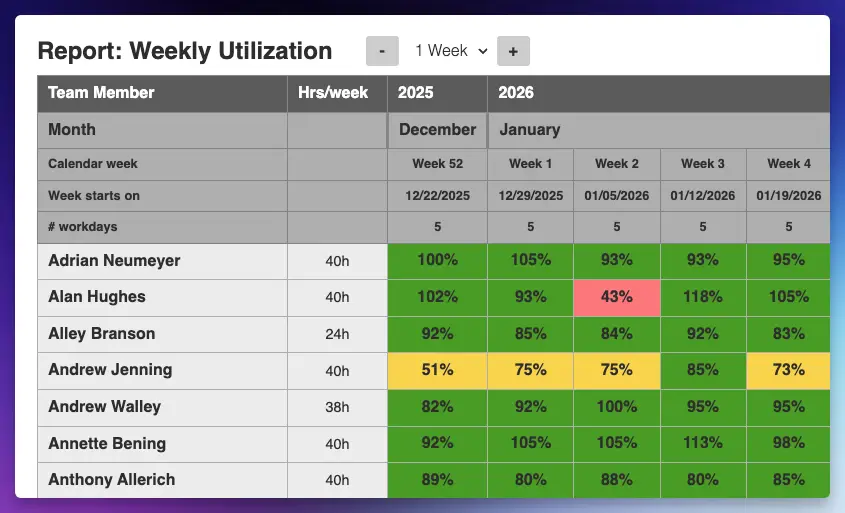Many people are drawn towards project management, yet they find it hard to confirm what the role actually involves. Join me on this journey through a typical day.

Every day is different
If you were born in the 70s or 80s, you’ve probably seen the movie Groundhog Day. Bill Murray is playing a news anchor who is reporting from the annual groundhog festival.
Unfortunately, he’s caught in a time loop, repeating the same day again and again. I know some of you are feeling like this, although you are not in a movie.

Well, that’s totally the opposite of what life of a project manager is like.
No day is like the other, and you get to work on a variety of things. Plus, you interact with so many people throughout the day. This is what makes the job so exciting.
Project management is multi-tasking
As a project manager you are wearing many hats.
You are the leader who has to give directions. You are the motivator for your team. You are the first point of contact for the customer. You are the problem solver. You are the communicator, and much more.
With so many responsibilities united in one role, the job requires multi-tasking. For one moment, I might be deeply immersed in the project plan, when suddenly the phone rings and one of my team members informs me about some urgent issue.
The next minute that we are about to look at the issue, our software vendor may call to confirm the dates for their onsite visit. And then coming up next: a status update with management.
That’s what the job of a project manager is like. You have to like this kind of spontaneity, and you have to be able to handle many tasks at the same time.
Like this guy …

So, what does a project manager do the whole day?
Organizing and planning
I usually start the day with desk work. I read my email and answer phone calls. Also, I call up my colleagues to get the latest status.

Whatever information I receive, I need to make sure to prioritize correctly.
Some facts are more important than others. There are people who SHOUT VERY LOUD yet their request is irrelevant for the project. On the contrast, you may come across some remark in an email which is highly significant for your project.
Understanding the urgency of all the information you receive is an important skill.
The other part involves planning. There may be a business trip ahead, or some major project activity that requires more granular planning.
To put it simply, planning means breaking down a bigger task into smaller chunks, and then see how everything can be allocated on the calendar so that the end date can be met.
Pulling together meetings
Meetings are an essential part in the day of every project manager. They serve to bring people together and to get everybody on the same page.
The more people there are in a project, the bigger is the risk of information not being received (or misunderstood).
Organizing meetings involves several steps:
I have to prepare an agenda and set clear goals for what I want to achieve. The meeting itself means listening and creating an atmosphere where ideas can be shared openly. At the end, I summarize what has been decided to create a sense of accomplishment.

Here are the types of meetings I invite for:
- Team updates
- Status updates with customers or stakeholders (how we are doing)
- Reconciliation meetings (to solve a conflict)
- Planning workshop
It takes some experience to conduct meetings in an effective way. Many people feel awkward when they start inviting others, and meetings can be very unproductive without a clear agenda and nobody leading the discussion. But like project management itself, you get better by just doing it!
Checking in with the team
In an ideal world, we would all collaborate in a smooth way and everybody would stick to their deadlines. There would be no misunderstandings, no delays, no problems.

Reality is very different.
First of all, our work is very complex (I work in IT). The processes and systems require big teams of specialists for the setup and customization. There needs to be someone overseeing everything and ensuring effective collaboration.
Second, wherever humans are involved, it automatically gets very complicated.
Human beings show all kind of behavior that is not good for a project. People procrastinate or forget stuff. Sometimes they don’t tell you the truth. Or they give you some version of the truth in order to protect themselves. Nobody wants to admit he doesn’t grasp a topic (and of course nobody will admit he has a problem with getting things done).
So, what’s the conclusion?
As a project manager, you have to have a good understanding of human nature. You have to read between the lines to get to the truth.
Let’s leave the theory behind. How does a project manager ensure his team is doing the work?
Here’s what I do:
- Walking by the desk and ask (“How are things going? Any issues?”?
- Having 1-1 conversations
- Organizing status meetings
They key point is to see if we are on track and if there are any issues coming up.
Sometimes the 1-1 meetings involve hands on problem solving. For example, my developer may be stuck with some software issue. He has tried everything but can’t see why it’s not producing the expected result. Although I’m not a technical expert, I may still be able to help — by asking good questions or by taking a look at the problem myself.
Sometimes, all it takes is a fresh view from somebody who is not involved in the topic!
What also happens on a typical day: people call me when there’s a problem.
Here is an example:
Telephone rings
Adrian: Hey Nick, how are you?
Nick: I’m OK, but we are having a problem with [person]. It’s now the 3rd time that we’ve reminded him, but he still failed to send us his input. The problem is we have only one week left to finish the concept.
Adrian: OK, I’ll take care of it right away.
This is a typical call I get during projects. One team cannot do their work because another person or team is not delivering. In the given example, what would I do? As a project manager you always have to think in terms of possible solutions. Plus, you have to understand the root cause of problems. In this case I would want to know:
- Why is the person not delivering?
- Does he know what is expected? There may be a misunderstanding.
- Does he lack skills to complete his work? If so, who can help him?
- Does he lack motivation?
How would YOU handle this case?
Meeting with the customer and stakeholders
Every now and then I meet with the customer and stakeholder side. The meetings are usually scheduled in advance and take between 1-2 hours.
What are these meetings for? The customer wants to know how the project is going. Are there are any issues and will the project goal be met? As a project manager, I get the opportunity to highlight what is bothering me and if we require any help.

Meetings with stakeholders are similar, although the focus is more on alignment than update. What are stakeholders? Stakeholders are departments or external parties that are somehow affected by the project and thus have to be involved.
I recorded this video for you
In this video I explain what the typical day of a PM looks like.
Author
-
Hi, I’m Adrian, a Senior Project Manager and the Creator of Tactical Project Manager, where I teach a pragmatic approach to project management. Led large-scale IT and business projects for over 10 years. My goal is to enable you to lead any project with confidence.
View all posts


